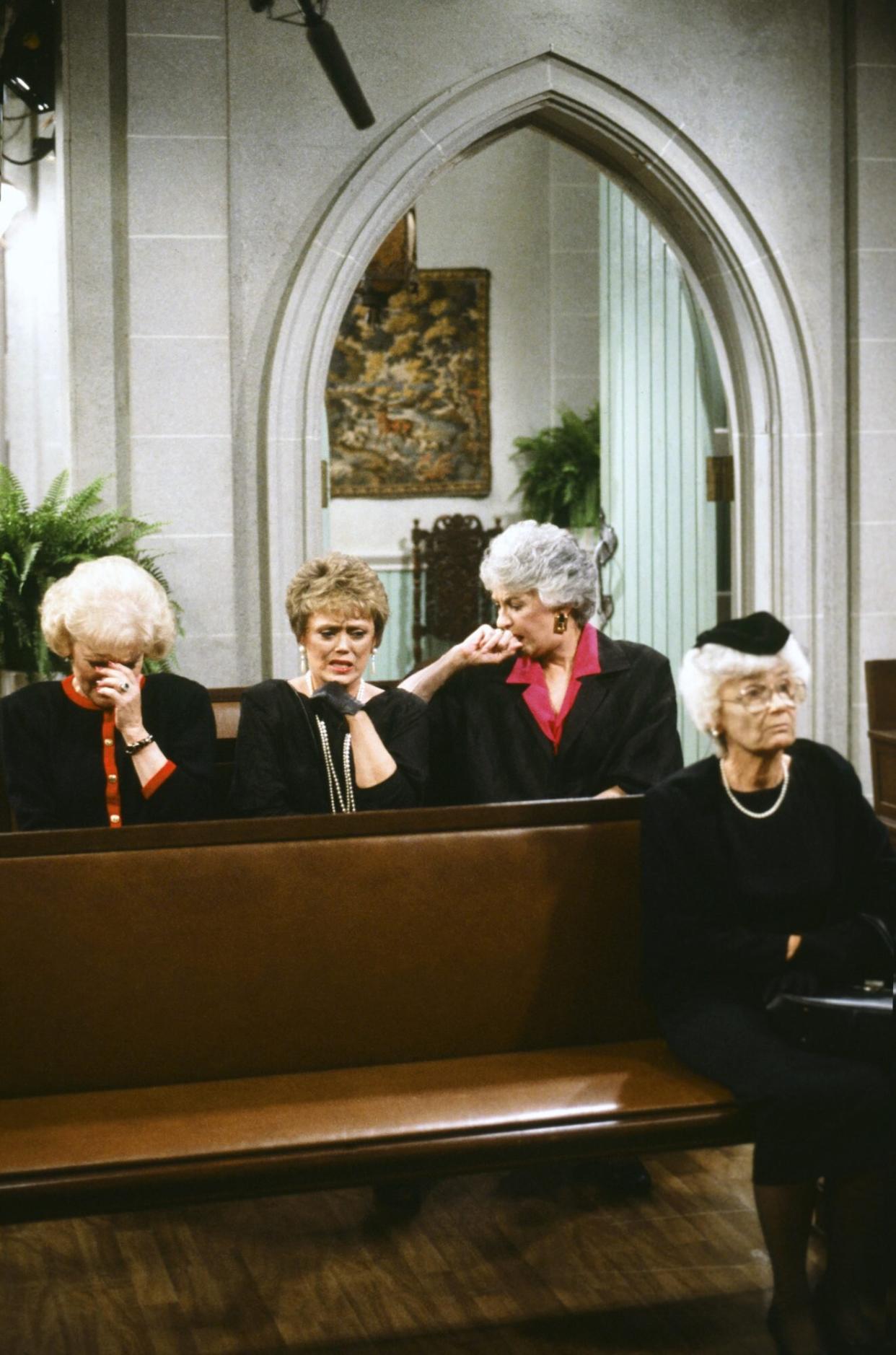What You Need To Know About Funeral Etiquette

NBC/Getty Images
One of the saddest facts of human life is that eventually everyone will need to attend a funeral. Attending funerals is a heartbreaking rite of passage and the last thing you want to do is seem ungracious or ill-mannered. Luckily, being a good guest at a funeral is fairly simple—arrive on time, sit quietly, don't get up during the service, and offer your sympathy to the family.
When someone passes, it's always a nice gesture to send flowers or a card to the family or to the funeral home in time for the visitation or service. Some families prefer charitable donations instead of flowers, so ask at the funeral home. If you are close to the family, it is always encourged to drop something to eat at the home–whether it be a casserole or a favorite dish.
As for who should attend a funeral, some families opt for intimate family-only ceremonies—and their wishes should certainly be followed—typically funerals are open to all who knew the deceased or the family. According to the Emily Post Institute, that includes children. While babies should be left with a sitter, well-behaved children as young as five or six who knew the deceased may find comfort in saying goodbye.
When it comes to dressing for a funeral, while black, dark grey, and navy blue are the traditional mourning colors, as anyone who has been to New Orleans funeral can tell you, traditions vary from place to place and person to person. Whatever you wear to the funeral, make sure it is neat, modest, and clean, as you would for dressing for any other important occasion. It never hurts to pack a few extra tissues or handkerchiefs into your purse.
WATCH: Funeral Etiquette Every Southerner Should Know
When attending a service, be on time. If for some reason you arrive late, according to Emily Post, enter a row from the side, not the center aisle. If the processional has started, wait outside until they are seated and don't try to squeeze past. While timeliness is important, don't skip the ceremony to avoid a late entrance. It's more important for you to pay your respects. Just enter quietly.
If the service has ushers, they will show you to your seat. If it's a less formal service without ushers, keep in mind that the first few rows of seats are typically reserved for family and close friends. Acquaintances should seat themselves in the middle or towards the rear. Once you're seated, stay put. The only exceptions are if you start to cough or cry, or have an upset or unruly child. In those cases, simply head to the lobby or bathroom as quietly and quickly as possible until it passes and the ceremony can be rejoined.
During the service, don't forget to completely silence or turn off your phone. Don't leave it on vibrate, as that can be disruptive during quiet moments. Of course, no one should be taking photographs during the ceremony, save for the family.
Unless the coffin or urn is already present, services typically begin with a processional, when the officiant enters followed by the pallbearers carrying or guiding the coffin and the family close behind. The service begins when the family and pallbearers are seated.
During the eulogy, pay attention to the family. If they laugh at a joke, join them. If the funeral has religious elements that you don't follow, you don't need to partake. Simply stand or sit respectfully and quietly.
At the end of the service, the recessional begins with the officiant who leads the pallbearers, carrying or guiding the casket, and then the members of the immediate family. If there are ushers, they will usually let rows out one at a time. Otherwise, funerals traditionally exit from the front, so simply wait until the rows in front of you leave before making your exit.
Frequently a few relatives will stay at the back of the church or outside the hall to briefly thank those who have attended the service. Give a quick hug or thank you and be on your way. Now is not the time for a good catch up or a lengthy condolence call.
Occasionally families will decide to have a private burial, attended by immediate family only. Otherwise, traditionally funeral attendees are invited to join the family at the cemetery, although there is no obligation to attend this portion of the funeral. After the casket is lifted into the hearse, the family enters cars or limousines and follows the hearse to the cemetery. Once there, the officiant typically says a few prayers or other meaningful words. The family may also take some time alone at the grave.

